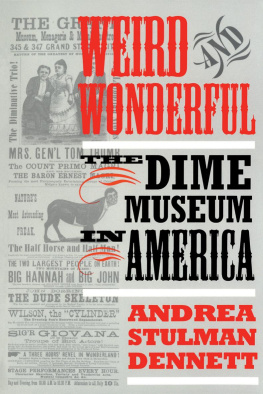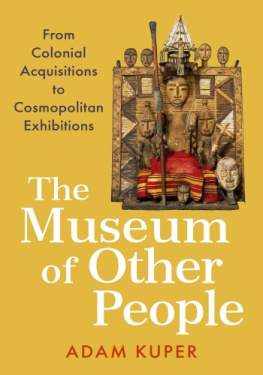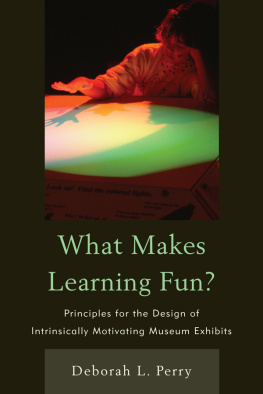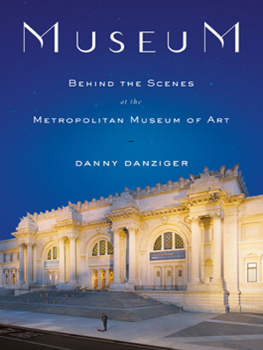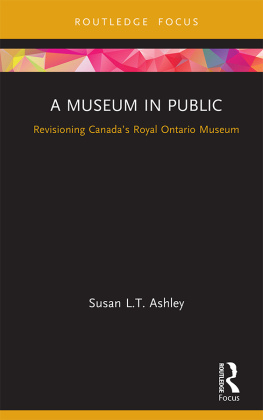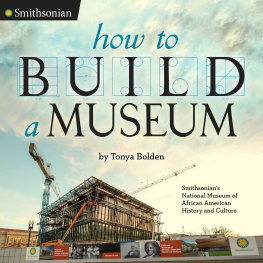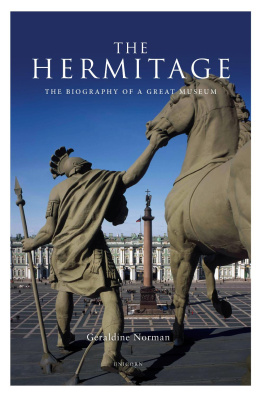RIGHTING AMERICA
AT THE
CREATION MUSEUM
M EDICINE , S CIENCE, AND R ELIGION IN H ISTORICAL C ONTEXT
Ronald L. Numbers, Consulting Editor

RIGHTING AMERICA
AT THE
CREATION MUSEUM

Susan L. Trollinger
and William Vance Trollinger, Jr.

2016 Johns Hopkins University Press
All rights reserved. Published 2016
Printed in the United States of America on acid-free paper
9 8 7 6 5 4 3 2 1
Johns Hopkins University Press
2715 North Charles Street
Baltimore, Maryland 21218-4363
www.press.jhu.edu
Library of Congress Cataloging-in-Publication Data
Names: Trollinger, Susan L., 1964
Title: Righting America at the Creation Museum / Susan L. Trollinger and William Vance Trollinger, Jr.
Description: Baltimore : Johns Hopkins University Press, 2016. | Series: Medicine, science, and religion in historical context | Includes bibliographical references and index.
Identifiers: LCCN 2015030255| ISBN 9781421419510 (hardcover : alk. paper) | ISBN 9781421419534 (electronic) | ISBN 1421419513 (hardcover : alk. paper) | ISBN 142141953X (electronic)
Subjects: LCSH: United StatesChurch history21st century. | CreationismUnited States. | EvangelicalismUnited States. | FundamentalismUnited States. | Creation Museum (Petersburg, Ky.)
Classification: LCC BR526 .T76 2016 | DDC 277.3/083dc23 LC record available at http://lccn.loc.gov/2015030255
A catalog record for this book is available from the British Library.
Special discounts are available for bulk purchases of this book. For more information, please contact Special Sales at 410-516-6936 or .
Johns Hopkins University Press uses environmentally friendly book materials, including recycled text paper that is composed of at least 30 percent post-consumer waste, whenever possible.
For our children
CONTENTS

U PPER L EVEL :
1. Grand Plaza
2. Main Entrance and Tickets
3. Portico
4. Zip Line Tower
5. Ark Encounter Exhibit
6. Stargazers Planetarium
7. Dragon Hall Bookstore
8. Main Hall
9. Coffee and Ice Cream Shop
10. Noahs Caf
11. Special Effects Theater
12. Entrance to Bible Walkthrough Experience
13. Dig Site
14. Starting Points
15. Biblical Authority
16. Biblical Relevance
17. Graffiti Alley
18. Culture in Crisis
19. Time Tunnel
20. Six Days Theater
21. Wonders of Creation
22. Garden of Eden
23. Cave of Sorrows
24. Ramp to Lower Level
25. Ark Construction

L OWER L EVEL :
26. Ramp to Upper Level
27. Voyage of the Ark
28. Flood Geology
29. Natural Selection
30. Facing the Allosaurus
31. Post-Flood
32. Babel
33. Last Adam Theater
34. Christ, Cross, Consummation
35. Legacy Lobby Bookstore
36. Legacy Hall
37. Chapel
38. Museum of the Bible
39. Palm Plaza
40. Palm Plaza
41. Buddy Daviss Dino Den
42. Dr. Crawleys Insectorium
43. Morris and Whitcomb Rooms
44. Discovery Hall
45. Answers Hall
RIGHTING AMERICA
AT THE
CREATION MUSEUM
INTRODUCTION
O n May 28, 2007, the Creation Museum in Petersburg, Kentucky, opened its doors, its purpose to point todays culture back to the authority of Scripture and proclaim the gospel message. It does this by demonstrating that the account of origins presented in Genesis is a simple but factual presentation of actual events. Thus, throughout the seventy-five-thousand-square-foot museum, visitors encounter exhibits that assert claims such as these: the God of the Bible created the universe in six consecutive twenty-four-hour days less than ten thousand years ago; The various original life forms (kinds) were made by direct creative acts of God; these acts of creation included the special creation of Adam and Eve, whose subsequent fall into sin resulted in death (both physical and spiritual) and bloodshed enter[ing] this world; and the global flood was an actual historic event that accounts for geological strata and the fossil record. The museum explains these claims to visitors by way of more than one hundred and fifty exhibits featuring animatronic human figures and dinosaurs (sometimes appearing in the same display), numerous explanatory placards and diagrams, and several miniature dioramas depicting a global flood, as well as a re-creation of a portion of the Garden of Eden that includes many life-size animal figures placed among artificial plant life, a waterfall with pool below, a life-size reproduction of the Tree of Life, multiple scenes with Adam and Eve, and the serpent.
It is tempting to dismiss the Creation Museum as a surreal oddity, an inexplicable and bizarre cultural site. But to imagine that the museum is a wacky but essentially irrelevant outpost on the far outskirts of American life is a huge mistake. As peculiar as it may seem, the Creation Museum lies squarely within the right side of the American cultural, political, and religious mainstream. That is to say, the museum exists and thrives not because it is so preposterousalthough some people are surely drawn to it precisely for this reasonbut because it represents and speaks to the religious and political commitments of a large swath of the American population. More than this, and more important, the Creation Museum seeks to shape, prepare, and arm millions of American Christians as uncompromising and fearless warriors for what it understands to be the ongoing culture war in America.
In short, the Creation Museum matters, and all Americans ought to understand what is going on there. Hence this book. And to truly understand the museum, the only place to start is with fundamentalism, that remarkable movement that shows no sign of disappearing from the American landscape. As a quintessential fundamentalist institution, the museum shares and promotes the movements core commitments: biblical inerrancy, premillennialism, patriarchy, political conservatism, and (of course) creationism.
Fundamentalism, Creationism, and Answers in Genesis
Fundamentalism finds its origins in the mid- and late nineteenth century, when Darwinism (On the Origin of Species appeared in 1859) and historicism (or higher criticism) challenged traditional understandings of the Bible. The former raised questions about the Genesis story of creation (six days? all those separate creations?), not to mention larger theological questions about Gods role in creation and the nature of human beings. The latter, because of its recognition that time and place shape texts and because of its determination to evaluate the Bible as one of these historical texts, raised serious questions about the supernatural character and literal authenticity of the biblical record. Who really were the authors of the sixty-six books of the Bible? How does one reconcile the inconsistencies and errors in the texts? What about the borrowings from the stories of other cultures?
Next page

